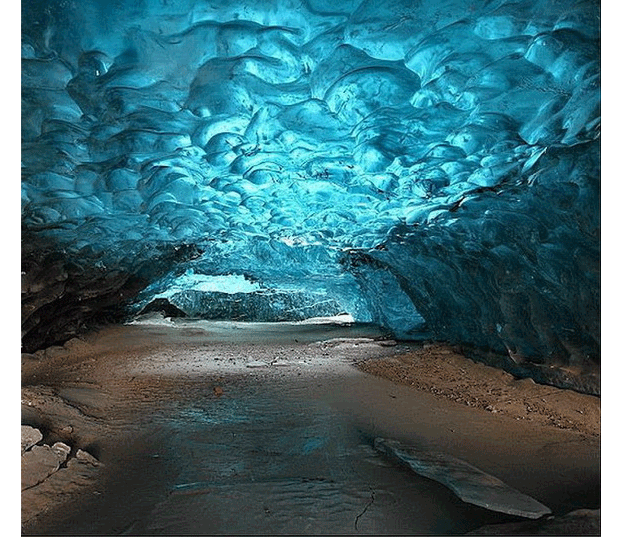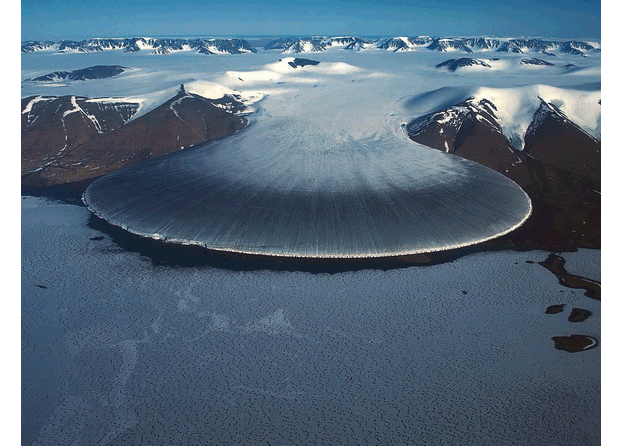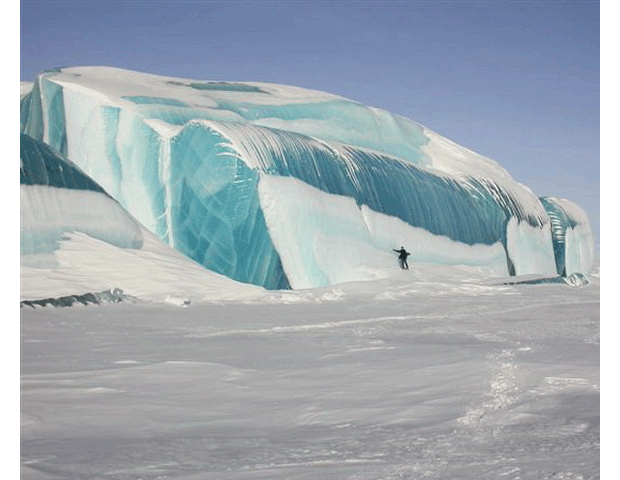|
In polar and various other cold regions you will find
ice, snow and water formations which are unusual, unique, and most of
them so beautiful they convey your breath away. Several of these
miracles of character may be visited only by researchers and rare
outdoorsmen which are ready for significant physical and financial
exertions. Due to their unpredictability and locations, these formations
is viewed limited to certain periods of the year.
|
|
Blue River, Greenland
The shredding within the Greenland glaciers in summer days fill the
lower areas with spectacular blue water. This phenomena causes river to
alter its shape. The colourful blue color arises from glacial silt. The
most beneficial Blue River on Greenland is because of the melting within
the Peterman Glacier. 80% within the Peterman glacier’s mass is melted
water. This Petermann glacier’s melting river was named Blue River and
additionally it allures many tourists from around the globe getting its
beauty. |
|
 |
|
Glacier Waterfalls in Svalbard, Norway
Svalbard, which means “cold coasts”, is an archipelago in the Arctic,
constituting the northernmost part of Norway as well as of Europe. It is
located about 400 miles north of mainland Europe, midway between
mainland Norway and the North Pole. Despite being so close to the North
Pole, Svalbard is comparatively warm, thanks to the warming effect of
the Gulf Stream, which makes it habitable. In fact, Svalbard is the
northernmost permanently inhabited region on the planet.
The islands cover a total area of 62,050 square km, nearly 60% of which
is covered by glacier with many outlet glaciers terminating in the sea.
Some of these glaciers have small waterfalls formed from melting snow
and ice. Most of Svalbard is barren rock but during the short summer,
the melting snow in the milder parts of the islands give place to vast
stretches of tundra vegetation, sometimes dotted with delicate flowers. |
|

|
|
Crystal Cave, Iceland
This cave in the glacier ice is triggered by glacial mill, or Moulin
where rain and melt water over the glacier surface are channeled into
streams that enter in the glacier at cracks. The waterfall touches a
dent or dimple or dimple for the glacier because the ponded water drains
towards lower elevations by developing extended ice caves by permitting
a energy outlet within the terminus inside the glacier. |
|

|
|
Briksdal Glacier, Norway
Briksdalsbreen is one of the most accessible and best known arms of the
Jostedalsbreen glacier. Briksdalsbreen is located in the municipality of
Stryn in Sogn og Fjordane county, Norway. The glacier lies on the north
side of the Jostedalsbreen, in Briksdalen (the Briks valley) which is
located at the end of the Oldedalen valley, about 25 kilometres (16 mi)
south of the village of Olden. It is part of Jostedalsbreen National
Park. Briksdalsbreen terminates in a small glacial lake,
Briksdalsbrevatnet, which lies 346 metres (1,135 ft) above sea level. |
|
 |
|
Birthday Canyon, Greenland
Birthday Canyon, carved by melt water, is 150 feet (45 m) deep. This
photo was taken in 2008. Along the edge of the canyon, lines on the wall
show the stratigraphic layers of ice and snow laid down over the years.
EIS field assistant, Adam LeWinter stands on the NE rim of Birthday
Canyon, atop feature called “Moab”. Black deposit in bottom of channel
is cryoconite – powdery windblown dust which is deposited and builds up
on snow, glaciers, or icecaps.
|
|
 |
|
Elephant-Foot Glacier, Greenland
Elephant Foot or Mittivakkat Glacier, seen down, has suffered its most
significant ice loss ever recorded — the biggest decline since at least
1931, probably 1898: The observations indicate that the total 2011 mass
budget loss was 2.45 metres, 0.29 metres higher than the previous
observed record loss in 2010. The 2011 value was also significantly
above the 16-year average observed loss of 0.97 metres per year. The
2011 observations further illustrate, even comparing the mass balance
value against simulated glacier mass balance values back to 1898, that
2011 is a record-breaking glacier mass loss year.
|
|
 |
|
Frozen Wave, Antarctica
This unique frozen wave is located in Antarctica. It was discovered by
american scientist Tony Travouillon in 2007. These pictures do not show
a giant wave somehow snap-frozen in the very act of breaking. The
formation contains blue ice, and this is compelling evidence that it was
not created instantly from a wave of water. Blue ice is created as the
ice is compressed and trapped air bubbles are squeezed out. The ice
looks blue because, when light passes through thick ice, blue light is
transmitted back out but red light is absorbed.
|
|
 |
|
Striped Icebergs, Southern Ocean
Most frequently icebergs have blue and eco-friendly stripes, but might
be brown. This phenomenon frequently happens within the Southern Sea.
Candy striped icebergs with multiple color bands, including yellow,
brown, black and blue, are very common within the cold waters around
Antarctica. Icebergs are created when large portions of ice discontinue
in the ice shelf then drop into the ocean.
|
|
 |
|
Ice Towers of Mount Erebus, Antarctica
100s of ice towers stud the flanks of 12,500ft. (3.800 m) high Mount
Erebus like day-old stubble evidently of the giant. The constantly
active volcano is possibly the only real devote Antarctica where fire
and ice meet, mingle and make something unique encompassing both their
natures.
|
|
 |
|
Baltoro Glacier
The Baltoro Glacier, at 62 kilometers long, is one of the longest
glaciers outside the polar regions. It is located in Baltistan, in the
Gilgit-Baltistan region of Pakistan, and runs through part of the
Karakoram mountain range. The Baltoro Muztagh lies to the north and east
of the glacier, while the Masherbrum Mountains lie to the south. At
8,611 m (28,251 ft), K2 is the highest mountain in the region, and three
others within 20 km top 8,000 m.
|
|
 |
|
|